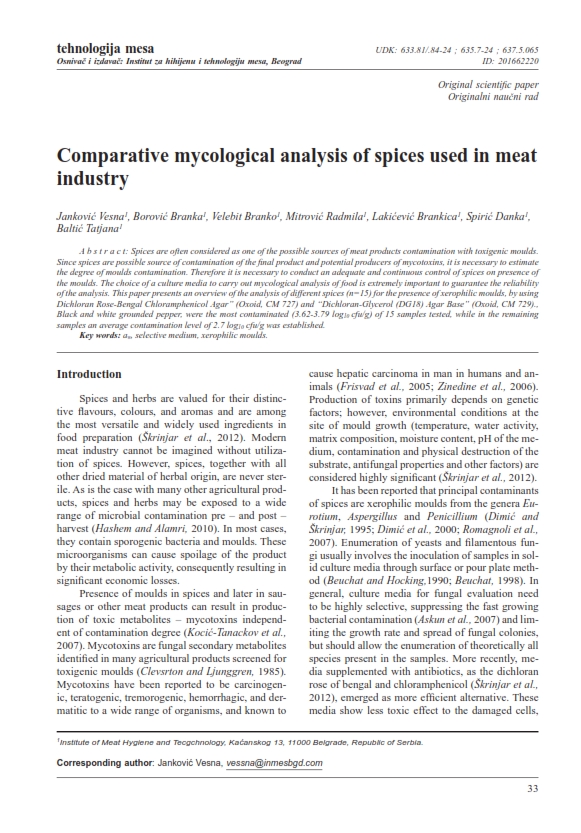Comparative mycological analysis of spices used in meat industry
Abstract
Spices are often considered as one of the possible sources of meat products contamination with toxigenic moulds. Since spices are possible source of contamination of the final product and potential producers of mycotoxins, it is necessary to estimate the degree of moulds contamination. Therefore it is necessary to conduct an adequate and continuous control of spices on presence of the moulds. The choice of a culture media to carry out mycological analysis of food is extremely important to guarantee the reliability of the analysis. This paper presents an overview of the analysis of different spices (n=15) for the presence of xerophilic moulds, by using Dichloran Rose-Bengal Chloramphenicol Agar” (Oxoid, CM 727) and “Dichloran-Glycerol (DG18) Agar Base” (Oxoid, CM 729). , Black and white grounded pepper, were the most contaminated (3.62-3.79 log10 cfu/g) of 15 samples tested, while in the remaining samples an average contamination level of 2.7 log10 cfu/g was established.





